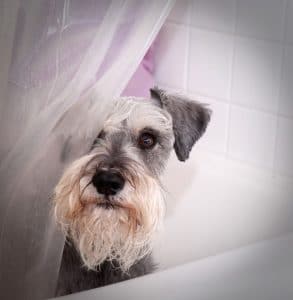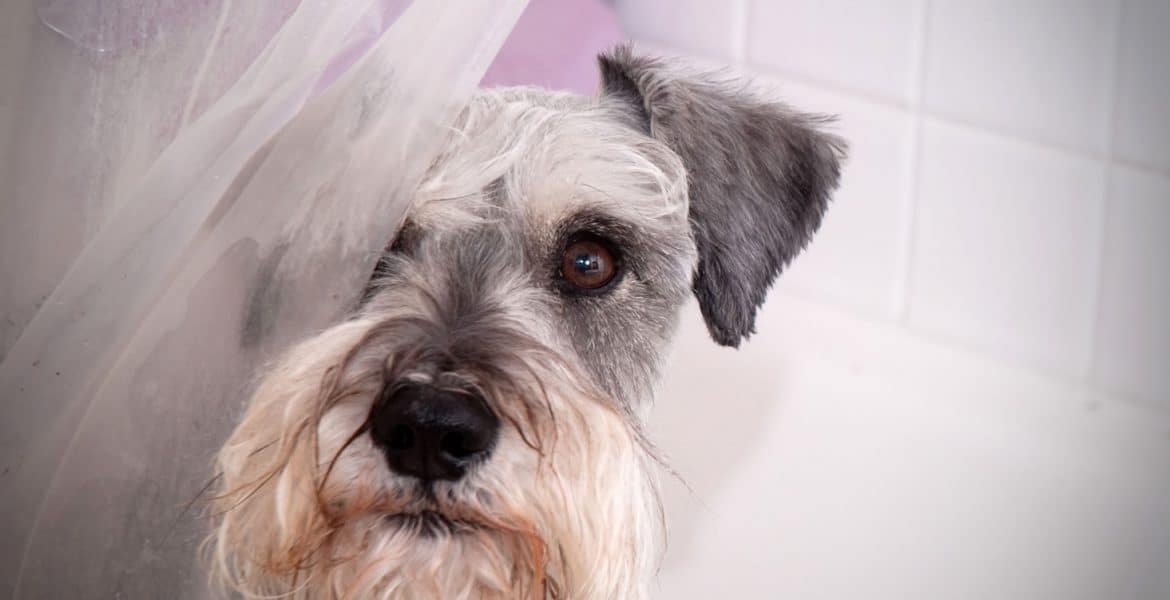
History
Miniature Schnauzers were developed in Germany in the late 1800s by cross-breeding Standard Schnauzers with Affenpinschers and Poodles. Originally bred to serve various functions of farm life such as herding, guarding and ratting around the house and barn, Standard Schnauzers were bred down into a smaller form, most likely to serve the main purpose of hunting vermin.
Since the goal of the farmers was to reproduce a Standard in miniature form, various cross-breeding attempts were made and in order to stabilise the gene pool, white coloured puppies (among others) were removed from the breeding program. White Miniature Schnauzers reappeared in the US in the middle of the 20th century. The American Kennel Club’s breed standard does not accept this colour for show dogs, although white is acceptable in the breed standard provided by the English Kennel Club.
Physical Attributes
Miniature Schnauzers are small, sturdy dogs with a compact, squarely proportional build. They weigh between 5 and 8.2 kilograms and their average height is between 30 and 36 centimetres. Their eyes are dark, oval-shaped and alert. Ears are set high and cropped folded over into a V-shape. They have a black nose, docked tail and their bushy beards and eyebrows are a very distinct feature of any Schnauzer. They have a double coat, with a soft undercoat and a hard, wiry outer coat. According to the standard, the acceptable colours of Miniature Schnauzers are black and silver, salt and pepper and black.
Miniature Schnauzers are often described as non-shedding dogs, although this is not completely true, any shedding does tend to go unnoticed as it is minimal. They do need regular combing and brushing twice a week to keep their leg feathers untangled. The beard also requires combing and washing as it can gather dirt, debris and food. Grooming their wiry coat is challenging and should be done once every month or so by a professional groomer.
Personality
Miniature Schnauzers are loyal, alert and attentive and make for great family pets. They can gain weight easily so need regular exercise, with daily walks being adequate as well as extra play sessions for younger dogs. Schnauzers are agile and intelligent and enjoy participating in many canine sports. They are excellent watchdogs, standoffish with strangers but have a tendency to bond especially strongly to one person. They’re suited well to assertive owners who can establish leadership early.
While they are usually willing to please, training can be challenging but will help to teach them the house-rules and keep their barking impulse in check. Socialization is important to teach these small dogs their true size and good manners. They’re generally good with children, although they are not suited to be playmates; rough play should be discouraged and any interactions with small pets and children should be supervised, especially given their high prey drive.
Health
Miniature Schnauzers are a healthy breed and don’t show signs of old age until well into their teens, but they can be prone to diseases associated with high fat levels, therefore their diet should be low in fat. They can also be susceptible to skin disorders, hip dysplasia, von Willebrand Disease and can have hereditary eye problems. The average lifespan of a Miniature Schnauzer is 14 to 16 years.


